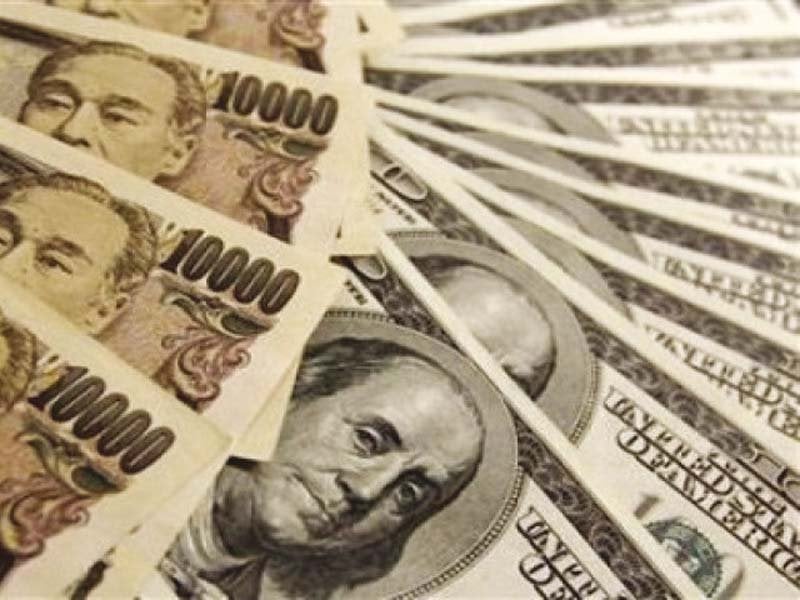
ISLAMABAD:
Pakistan has obtained foreign loans worth $49 billion during the last 10 years and over one-third were utilised for budgetary support instead of creating physical assets, hence raising questions of debt sustainability.
On average, Pakistan received close to $5 billion in fresh loans every year and returned about $2.5 billion to its international creditors, adding the remaining amount to its debt stock.
Repayment amounts for the last couple of years have been increasing due to the $7.7-billion loan Islamabad obtained from the International Monetary Fund (IMF) in 2008.
Read: Deposits increase 10%, growth in loans still low
Out of the $49.2 billion debt that international creditors gave to Pakistan from 2005 to June 2015, Economic Affairs Division (EAD) Secretary Saleem Sethi on Thursday shared details of $30.7 billion with the Senate Standing Committee on Finance, Revenue and Economic Affairs. These loans were signed by the EAD.
In addition, State Bank of Pakistan (SBP) signed two separate loans with the IMF, first in 2008 and the second in 2013, totalling $14 billion.
The total volume of the 2008 loan was $11 billion but disbursement stood at $7.7 billion. The size of the second IMF package is currently $6.2 billion and out of that, $4.2 billion has already been disbursed.
The Ministry of Finance raised another $4.6 billion by floating international bonds from 2005 through 2015.
The Chairman of the Standing Committee, Senator Saleem Mandviwalla, showed concern over the phenomenal growth in external borrowings.
The parliamentarians were also alarmed over the increasing borrowings for budgetary support and governance reforms.
Public debt management remains a matter of concern for the IMF that has been pushing the government to reorganise the Debt Policy Coordination Office.
Like its predecessor, the PML-N government has failed to bring down the debt-to-Gross Domestic Product ratio to within statutory limits of 60%. It has been borrowing in violation of Fiscal Responsibility and Debt Limitation Act that binds the sitting government to keep the total public debt below 60% of GDP.
According to the EAD, out of the total $30.7 billion, multilateral creditors excluding the IMF, gave an amount of $22.8 billion. Bilateral lending during the last ten years stood at $7.9 billion.
Of $30.7 billion, an amount of $11.3 billion was obtained for budgetary support during the last 10 years. In addition, successive governments issued $4.6 billion international bonds to raise funds for budget financing and the IMF approved $1.2 billion under this head. The total budgetary support during last 10 years amounted to $17 billion.
Independent economists are opposed to the idea of borrowing in dollars for financing the budget. They argue that foreign loans should only be obtained for creating assets.
An amount of $5.3 billion was obtained for energy sector projects, $2.9 billion for transport and communication and $2.1 billion loans were obtained in the name of governance reforms. The governance reform is another area where the money is going down the drain. The members asked the Secretary EAD to provide details of the governance reform projects and their intended outcomes.
After the IMF, the World Bank remained the largest lender that provided $9.2 billion in loans, followed by the Asian Development Bank that gave $8.4 billion and the Islamic Development Bank provided roughly $5 billion.
Read: Govt’s loans tally up to $5.1 billion
China remained the single largest bilateral lender that gave $5.3 billion loans, followed by Japan that extended $1.1 billion loans. Saudi Arabia gave $979 million, on average $100 million a year.
HEC privatisation
Meanwhile, the alleged wrongdoings in the failed attempt to privatise Heavy Electrical Complex echoed again on Thursday when the committee showed dissatisfaction over the responses given by the Privatisation Commission. Mandviwalla constituted a sub-committee to further probe the transaction and sought details about the buyer, Cargill Holdings Limited. It also sought details about the meetings of the PC Board including the names of those members who voted to sell the HEC at a throwaway price of Rs250 million.
Published in The Express Tribune, August 7th, 2015.
Like Business on Facebook, follow @TribuneBiz on Twitter to stay informed and join in the conversation.

















































COMMENTS (21)
Comments are moderated and generally will be posted if they are on-topic and not abusive.
For more information, please see our Comments FAQ